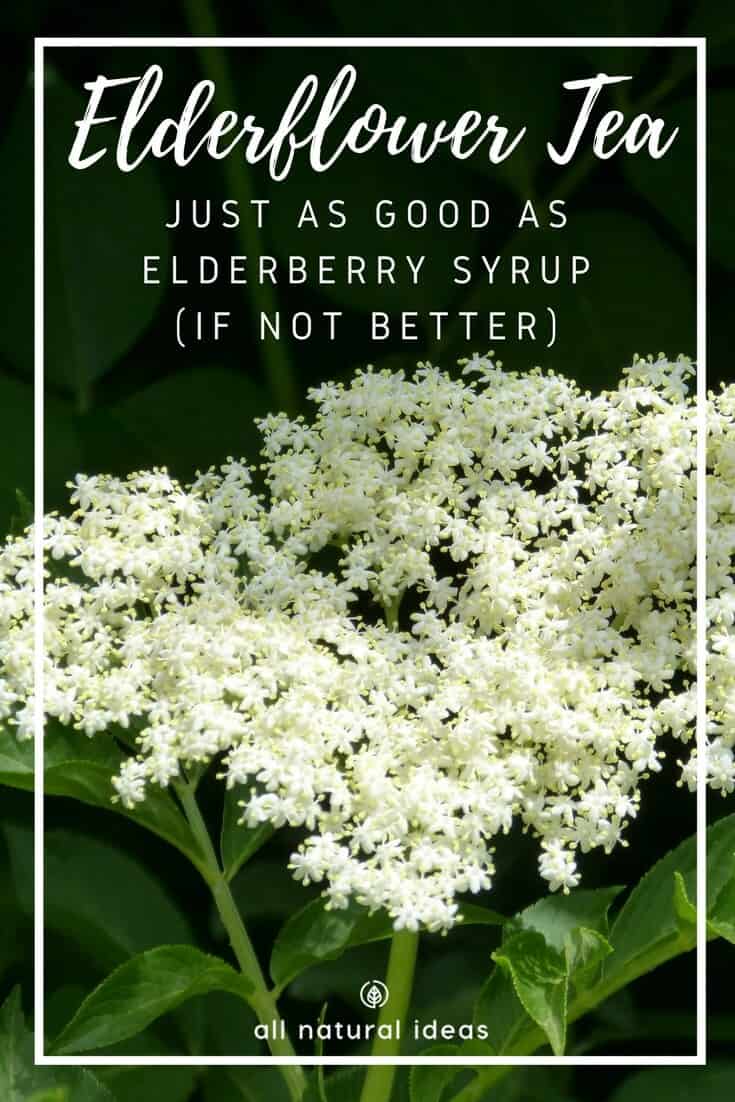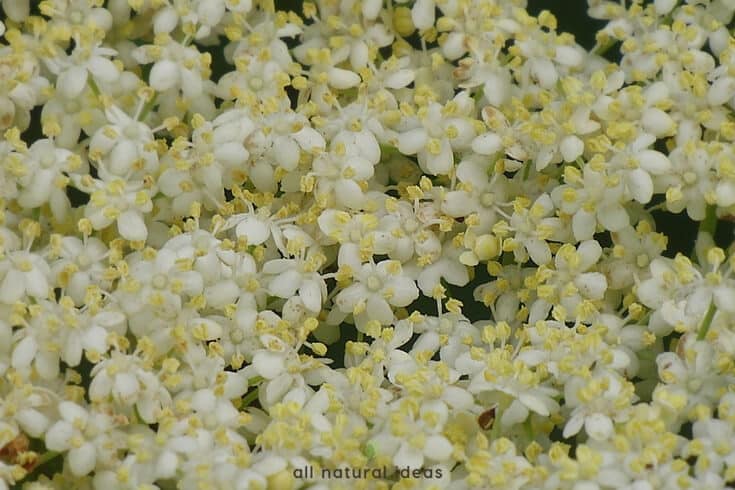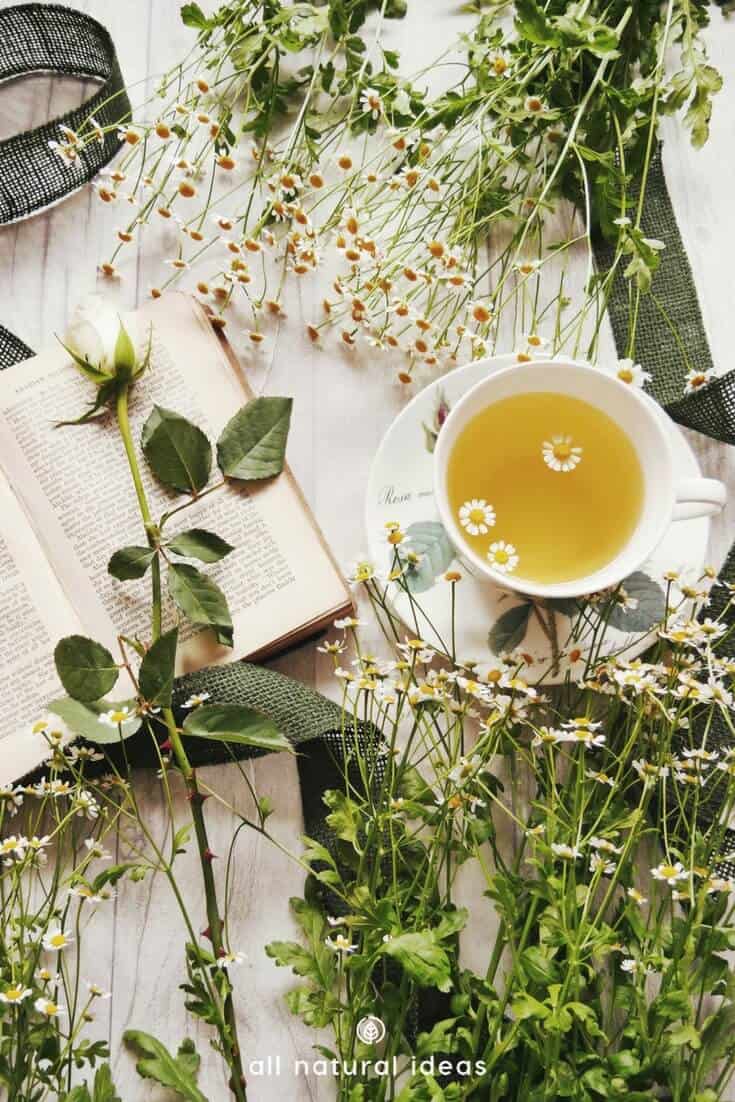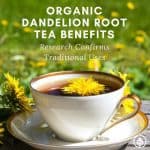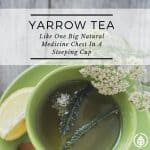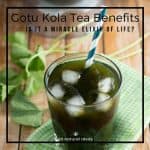Elderflower tea benefits include support for colds and flu. But how does it compare to the more popular elderberry syrup? Can cold and flu prevention be as simple as sipping a cup of hot tea?
Quick one-question pop quiz: what’s the difference between elderflower vs elderberry?
The answer: it’s kind of a trick question. There’s not much of a difference. You see, they both come from the same plant. Elderberry is a small bush with berries often used as an immune booster and cold remedy. But the flowers that turn into the berries can be used too.
Elderberries are common in European jellies, jams and juices. It’s also in harder stuff like sweet cordials and liqueurs. The liqueur sambuca is an appropriate name considering the scientific name for elderberry is Sambucus nigra.
But you don’t have to consume blood-sugar spiking carbs or get plastered slamming shots of Sambuca to get the benefits of elderberry. In fact, you can simply drink elderflower tea.
The tea may help with hormonal balance. It may also help curb inflammation and prevent cardiovascular disease. These are just a few of the benefits.
What is elderflower?
How are the flowers different than the black berries? Are they one and the same?
The flowers are simply the blooms from the elderberry tree. They are delicate in texture and white in color.
In addition to fighting colds and flu, a tea made from these white flowers is often used with sinus infections. It’s said to help clear the sinuses and bronchial tubes.
Elderflower may be used for high-blood sugar as well as constipation support. According to WebMD, it’s also used to increase urine production and sweating. And yet another elderflower benefit is to stop bleeding.
Let’s take a look at some research that supports the use of elder extracts.
Can an herbal beverage neutralize influenza?
The berries themselves are high in antioxidants. This study lends support to the use of elder extract for colds and flus. The researchers conclude that it shortens flu symptoms by a whopping four days on average.
Furthermore, the authors suggest, elder can also lessen the amount of medication necessary for flu treatment. Therefore, elderberry “seems to offer an efficient, safe and cost-effective treatment for influenza,” the authors conclude. (However, they acknowledge the findings need to be confirmed in a larger study.)
Elderberries also may also have health benefits when used for conjunctivitis and arthritis.
Elder extract benefits
That’s great about the benefits of elderberry. But do you get the same benefits from the flowers of the elder tree?
The short answer: pretty much. Both the berries and the flowers contain numerous compounds that support the immune system.
According to this herbal website, the flowers of the elder tree have a long-standing reputation as a treatment for all kinds of inflammatory and congestive conditions of the respiratory system. Especially when these are accompanied by fever. This makes elderflower tea a comforting immune system boost..
Again, these benefits sound great. But what about clinical proof that it works?
This exhaustive research says elder extracts possess significant antioxidant activity. They also prevent the formation of new blood vessels. This is important because cancer cells need new blood vessels to essentially breathe.
Furthermore, there’s a particular type of antioxidant in the flowers: anthocyanins. These antioxidants protect certain cells from aging.
And not only that, elder may lower LDL levels. LDL is the so-called bad form of cholesterol.
Consequently, the flowers from the edler tree may not only help prevent cold and flu, it may also prevent disease in blood vessels.
One of the main reasons drinking elderflower tea may be good for you is it boosts cytokine production. Cytokines boost the communication between immune cells. The better your immune cells talk to each other, the better you’ll be able to fight off illness and disease.
Elder Extract Research
As for more proof that elder extracts help fight flus, consider this study. It concludes that it can inhibit the effects of type A influenza virus (H1N1). And it can do so just as well as popular name-brand prescription drugs such as Tamiflu.
In addition, there’s another particular type of antioxidant extracted from the flowers. And this antioxidant is a strong microbe killer. Particularly against a household name of bacteria, Staphylococcus aureus. A “staph” infection can cause life-threatening diseases such as pneumonia and meningitis.
Moreover, this research shows the flowers may stimulate bone formation. Thus, perhaps it’s an effective all-natural solution for mild osteoporosis.
This study in the journal, Nutrients, demonstrates beneficial features of elder extract in preventing breast cancer. It does this by preventing estrogen secretion. When there’s too much estrogen activity, the condition known as estrogen dominance occurs. Estrogen dominance leads to imbalanced hormones and may be a root cause of breast cancer.
Thus, the flowers may help decrease circulating estrogen concentrations in the blood. However, the study’s results are from a lab setting, not on humans. Nevertheless, the results are promising.
Polyphenols are yet another prominent type of antioxidants found in elder. Consuming enough of them is associated with a decrease in the incidence of heart disease. And other maladies due to inflammation.
Elderflower taste
All these benefits sound great. But how does the tea taste? Well, according to this research, the flowers from the elder tree are used as a as a flavor enhancer in meals and beverages due to its strong taste.
But is that strong taste good? Or strong taste bad?
This gin website claims the flowers possess a lighter taste than blue or black elderberries. That’s why sipping a herbal blend with elder florals is like drinking a cup of summertime.
Elderflower tea recipe
According to this website devoted to herbal teas, to make a cup, simply do this: use two to four flowers in a teapot. Pour boiling water and let steep for a minimum of 10 minutes. Then, strain the blend. Sip. Enjoy. Are you a lazy? Then you can purchase dried flowers or elderflower teabags.
